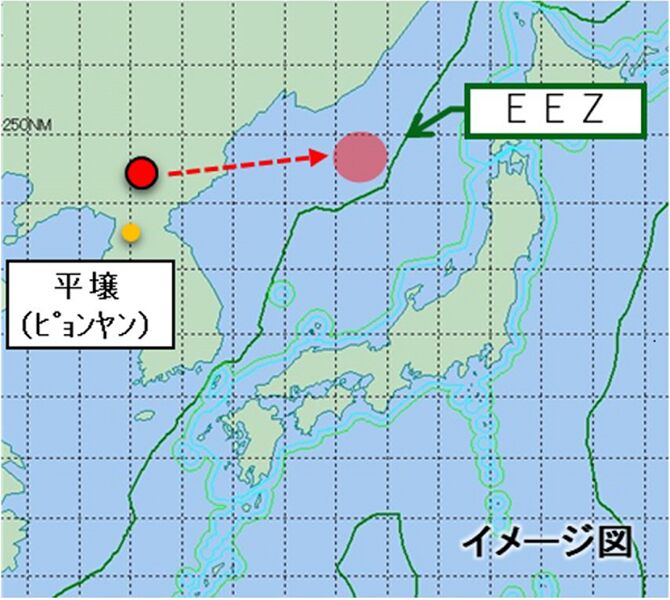
According to the Japanese Ministry of Defense, the missile that North Korea launched on 30 January travelled a distance of 800 km and landed in the sea outside of Japanese territory. The yellow dot in this Japan MoD image indicates Pyongyang. (Japan Ministry of Defense)
North Korea has confirmed that it test-launched on 30 January its locally developed Hwaseong-12 (also spelt Hwasong-12) intermediate‐range ballistic missile (IRBM).
The launch was the seventh missile test that Pyongyang has conducted since the start of 2022. It is also the longest-range missile that North Korea has launched since 2017.
Pyongyang's official Korean Central News Agency (KCNA) said the launch of the “Hwasong-12-type surface-to-surface intermediate- and long-range ballistic missile” was organised by the Academy of Defence Science (ADS), the Second Economic Committee, and other institutions.
It added that the launch aimed to verify the Hwaseong-12's deployment and accuracy and was conducted by the “highest-angle launch system from the northwestern part of the country” towards the East Sea (Sea of Japan).
The KCNA also issued images taken from space by what it said was a camera installed on the missile’s warhead. The KCNA said the images, which also showed the missile as it launched from a transporter erector launcher (TEL), “confirmed the accuracy, security and effectiveness of the operation of the Hwasong 12-type weapon system under production”.
South Korea's Joint Chiefs of Staff (JCS) said it had detected that the missile was fired shortly before 0800 (local time) at a steep angle from Mupyong-ri in North Korea's northwest Jagang province. The JCS said the missile flew about 800 km at a top altitude of 2,000 km.
Japan's Ministry of Defense (MoD) made an identical claim in terms of the missile's estimated flight distance and altitude. It added that the missile flew for 30 minutes and fell outside Japan's exclusive economic zone.
Looking to read the full article?
Gain unlimited access to Janes news and more...



